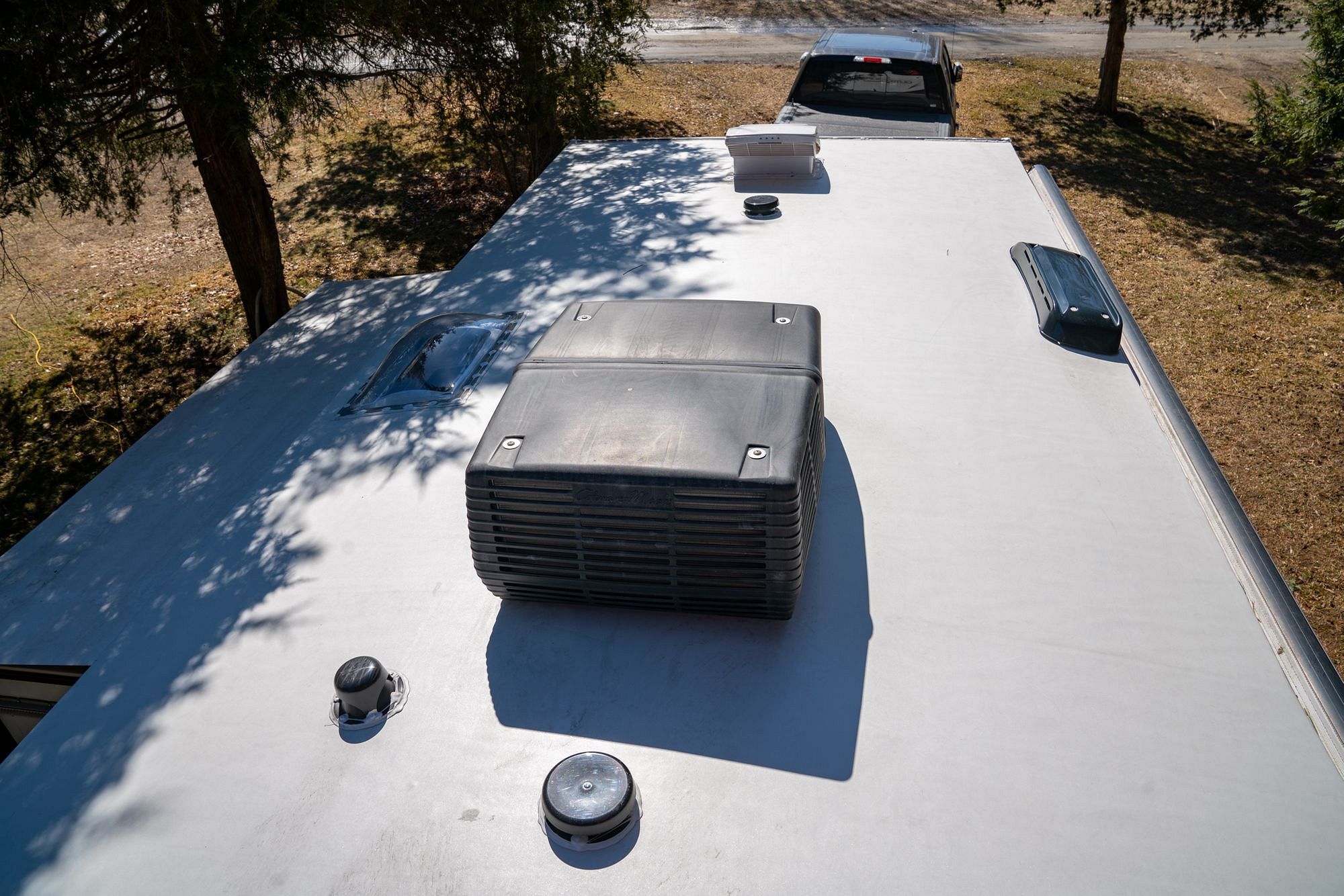Traveling in a trailer opens a world of adventure, allowing you to explore breathtaking landscapes and immerse yourself in diverse cultures. However, one key aspect of owning a travel trailer that often goes unnoticed until a leak appears is its roofing. In this comprehensive guide, we’ll explore everything you need to know about travel trailer roofing, from types and maintenance to personal experiences and product recommendations.
Understanding Travel Trailer Roofing
Your travel trailer’s roof is its first line of defense against the elements. Understanding its importance is essential for every travel enthusiast. A well-maintained roof not only protects your trailer but also extends its lifespan.
Types of Travel Trailer Roofs
Before diving into maintenance tips, let’s discuss the various types of roofing materials used in travel trailers:
- Rubber Roofing: Lightweight and affordable, rubber roofs are popular for many travel trailers. They can be easily repaired and are often resistant to UV rays.
- Fiberglass Roofing: Known for durability and longevity, fiberglass roofs offer superior protection but can be more expensive to replace.
- Metal Roofing: Metal roofs are robust and can withstand severe weather conditions. They tend to have a longer lifespan but may be noisier during rain.
- EPDM vs. TPO: Both are types of rubber roofing, with EPDM being more elastic and TPO offering better energy efficiency.
Comparison Table of Roofing Types
| Type | Durability | Cost | Maintenance Needs |
|---|---|---|---|
| Rubber | Moderate | Low | Low |
| Fiberglass | High | High | Moderate |
| Metal | Very High | Moderate | Low |
| EPDM | High | Moderate | Low |
| TPO | High | Moderate | Low |
Travel Trailer Roofing Maintenance
Maintaining your roof is crucial for preventing leaks and extending the life of your trailer. Here are some top tips based on my personal experience:
Regular Inspections
Every time you take your trailer out, inspect the roof for any signs of wear and tear. Pay special attention to seams and joints where leaks are most likely to happen.

Cleaning Your Roof
Debris, dirt, and grime can accumulate on your trailer roof, leading to moss growth and deterioration. Regularly clean your roof with a mild soap solution and a soft-bristle brush to maintain its condition.
Sealing and Caulking
Using a good quality sealant can prevent leaks. Every few years, reapply caulk around vents, air conditioners, and other openings.

Common Problems With Travel Trailer Roofs
While owning a travel trailer is rewarding, it comes with its challenges. Here are some common roofing problems you might encounter:
Leaks
Leaks are the most dreaded problem. They can lead to significant interior damage if not addressed quickly. Always check for water stains inside your trailer.

Punctures and Tears
Punctures can occur from branches, hail, or heavy objects. Repairing small tears promptly can save you from more extensive repairs later.
Seam Separation
Over time, seams may separate, especially in rubber roofing. Regular inspections and prompt resealing can help prevent this issue.

Travel Tips for Trailer Owners
Your adventures can be made even more enjoyable with a few travel tips:
Plan Your Destinations
Before hitting the road, plan your stops. Some destinations are more trailer-friendly than others. Research campgrounds or RV parks that can accommodate your trailer size.

Stay Hydrated
Always carry plenty of water, especially during long drives or hikes. Staying hydrated keeps the travel spirit lively!
Destination Highlights for Trailer Travelers
Here are some top places to consider for your next trailer adventure:

Yellowstone National Park
Home to geysers, hot springs, and wildlife, Yellowstone offers stunning views and excellent camping spots.
Grand Canyon National Park
Experience the breathtaking views of the canyon and enjoy outdoor activities like hiking and river rafting.

Lake Tahoe
This beautiful area offers both summer and winter activities, making it perfect for year-round travel trailer adventures.
Best Products for Travel Trailer Roofing
When it comes to roofing materials and maintenance tools, several products stand out:
Top-Rated Travel Trailer Roofing Products
| Product | Rating | Price | Best For |
|---|---|---|---|
| Eternabond RoofSeal | 4.8/5 | $24.99 | Sealing leaks |
| Dicor Self-Leveling Lap Sealant | 4.7/5 | $15.99 | Sealing seams and joints |
| Camco RV Roof Cleaner | 4.5/5 | $12.99 | Cleaning roof |
| Maxxair Vent Cover | 4.6/5 | $45.99 | Ventilation |
Pros and Cons of Different Roofing Types
Here’s a quick overview of the advantages and disadvantages of each roofing type:
Rubber Roofing
Pros: Affordable, lightweight, easy to repair.
Cons: Can become brittle over time.
Fiberglass Roofing
Pros: Durable, low maintenance.
Cons: More expensive, harder to repair.
Metal Roofing
Pros: Extremely durable, resistant to severe weather.
Cons: Can be noisy, more expensive than rubber.
FAQs About Travel Trailer Roofing
How often should I inspect my travel trailer roof?
It’s recommended to perform a thorough inspection at least twice a year. Additionally, check after severe weather events.
What is the best way to clean my travel trailer roof?
Use a mild soap solution and a soft-bristle brush, avoiding harsh chemicals that could damage the roofing material.
How do I know if my roof needs to be replaced?
Signs that your roof may need replacement include extensive leaks, severe punctures, or significant wear on the material.
Can I apply roof coating over an existing roof?
Yes, many roofing coatings can be applied over existing roofs as long as the surface is clean and in good condition. Make sure to follow manufacturer recommendations.
Conclusion
Your roof is a critical aspect of your travel trailer, and understanding how to maintain it can significantly enhance your travel experiences. Whether you’re navigating the rugged outdoors or parking in a serene campground, a well-maintained roof will keep you dry and safe. Happy travels!